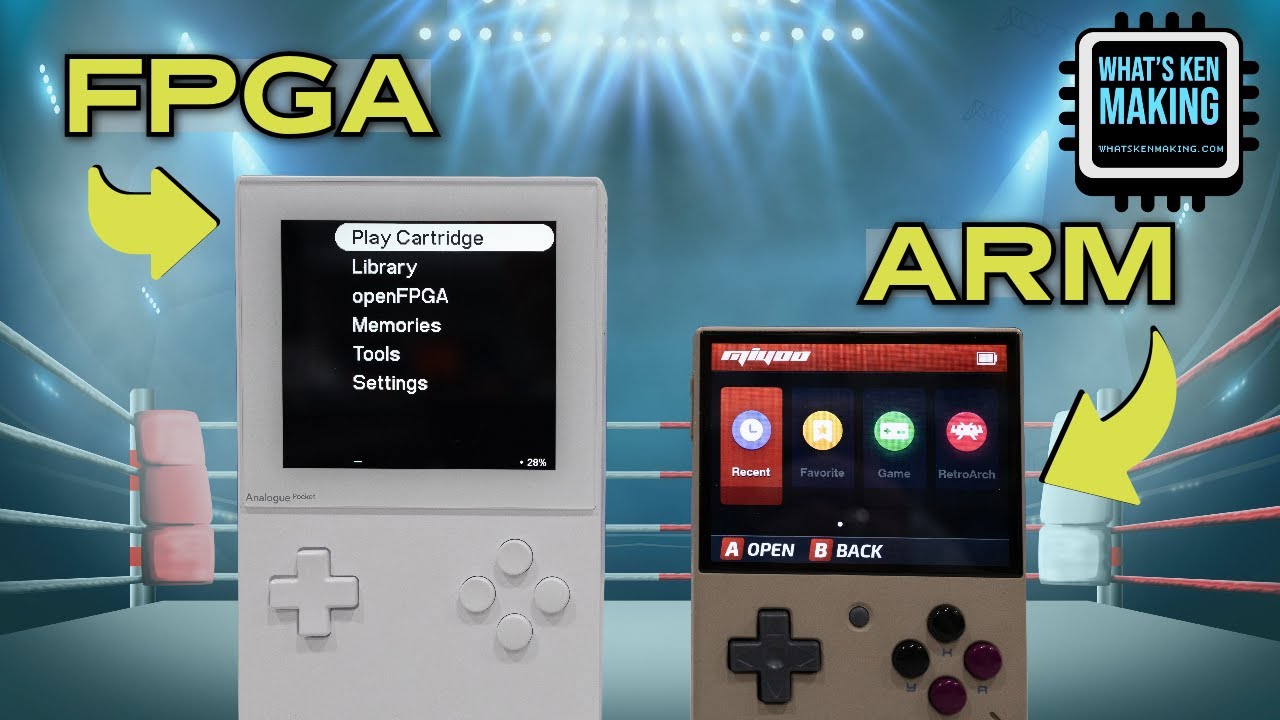- cross-posted to:
- pcgaming@lemmy.ml
- cross-posted to:
- pcgaming@lemmy.ml
cross-posted from: https://hexbear.net/post/1468725
Your thoughts?
I really liked the section of the video titled “CPU” 'cause it actually explained everything well and used sketch-noting or whatever you call it (I’m referring to the graphs here).



Isn’t it better and more accessible to mod existing roms to work with software emulators instead of doing the FPGA thing? It’ll help you preserve the game just the same way and won’t be as difficult as learning FPGA shit.
The route most normal people think when some code is buggy is to modify the code instead of making a whole new CPU. The ROMs aren’t going to vanish just because there are no more CPUs which can run the same ROM.
I think what the society would benefit from is a centralized ROM Marketplace (Donation based) where you upload modded ROMs for obsolete consoles but of course because of how intellectual property works under capitalism this isn’t possible.
would benefit from is a centralized ROM Marketplace (Donation based) where you upload modded ROMs for obsolete consoles but of course because of how intellectual property works under capitalism this isn’t possible.
As mentioned, FPGAs are super expensive, not very efficient and require a lot of knowledge of the underlying ICs.
Also there are no FPGAs for PS2 and other modern consoles
I guess the argument would be that software fixes need to be implemented for each ROM separately. Which also involves the pain of decompiling. Yes FPGAs are probably a pain, but they potentially offer perfect emulation of every game.
One thing I’m not sure about is how portable FPGA logic is. If I write a NES emulator in verilog for one FPGA, can that code be reused on a later model if, for example, my FPGA goes out of production?
There’s also an argument to be made for preserving the “hardware” - those machines don’t last forever. the Analouge guys recently made (or are making?) an FPGA that is compatible with all of the Turbografix hardware paraphernalia which is arguably just as important as the actual software
you don’t compare fpgas to just any emulator. But you can compare them to gate level simulators (not emulators). The ones that take a beefy 4GHz+ pc just to emulate a gameboy at 8 fps. But also guarantee 100% accuracy and compatibility with all games. Fpgas can do that in real time.
FPGAs are the best way to preserve a console for the future. The hardware especially for older consoles was very special and custom, basically unique architecture.
While modding the ROMs seems to be easier, it has to be done for every single one and could lead to alteration of the game ifself (timing comes to mind) FPGAs have to only designed once per Console.
FPGAs get more and more accessible and cheaper every day. So for the future it will be way easier, cheaper and more accessible.
Why would you use FPGAs instead of either trying to make the emulation better or fixing the code to work on new instructions.
And yea modding roms is more difficult but not as difficult as a. Trying to learn how the cpu on these old consoles function b. Learning how FPGAs work c. Programming these fpgas to worn like old consoles.
Alternative is to look at the ROM in which case you would only have to modify the assembly to fix the quirks. Heck if it were a higher level language even a dumbass like me making dogshit on github might be able to do it.
Modern CPUs are so much more powerful, even look at lower power more efficient ones like the one on steam deck that FPGAs feel wasteful. Obviously there might use cases for FPGAs while developing software emulators (I’ve seen it being used to capture video from memory to bypass DRM) especially as the old consoles themselves break.
And so are general purpose CPUs at a much faster rate.
I’m more inclined to agree with the commentor on the other thread.
“Software emulators: are free, run on everything from your PC, phone, your old PSP and probably twenty other things you have in your room right now, putting new life into old otherwise useless hardware FGPA: one-purpose landfill trash that consoomers buy because they can’t imagine investing time in something that doesn’t involve spending large amounts of money, getting dumb plastic shit to fill up your home”
Only the dev team needs to know FPGA design. Not everyone. Just like the otherway. Someone needs to learn how to dump the ROM and probably needs to design hardware for it. Needs to dissasable it, edit the resulting mix of probably really special assembly (cause of special hardware) and then be able to compile it again.
Sounds much easier to do for every single ROM then designing the FPGA…
but since everyone has those skills that should not be a problem /s
Emulators are a nice middle ground. They are allowing to emulate the environment and you only have to create the emulator once and all/most ROMs are running. But still are not able to reflect the game to 100%. Talk about that to the speedrunning scene on older hardware. Some quirks/bugs/specific lags are not there.
Yea and that’s why speed runners and consoomers are losers who should be deprived of FPGAs.
This is all very true.
Doesn’t PS2 use a PowerPC architecture? And newer consoles are on x86 so having FPGAs for either stack feels uneconomic right now. Also the issue with making roms compatible is a lot of them used chip level tricks to get certain things to function.
No, it uses a custom architecture around a custom CPU, the “Emotion Engine”, a MIPS-based CPU. You must be thinking of the Wii or XBox360 that came after it.
You’re right! I wonder if there’s a reason beyond costs.